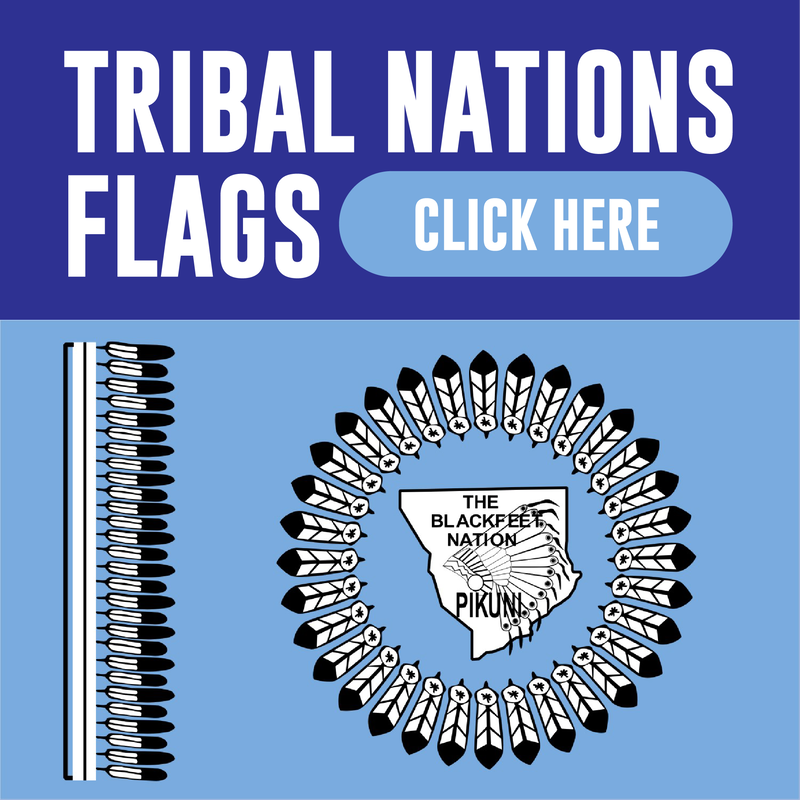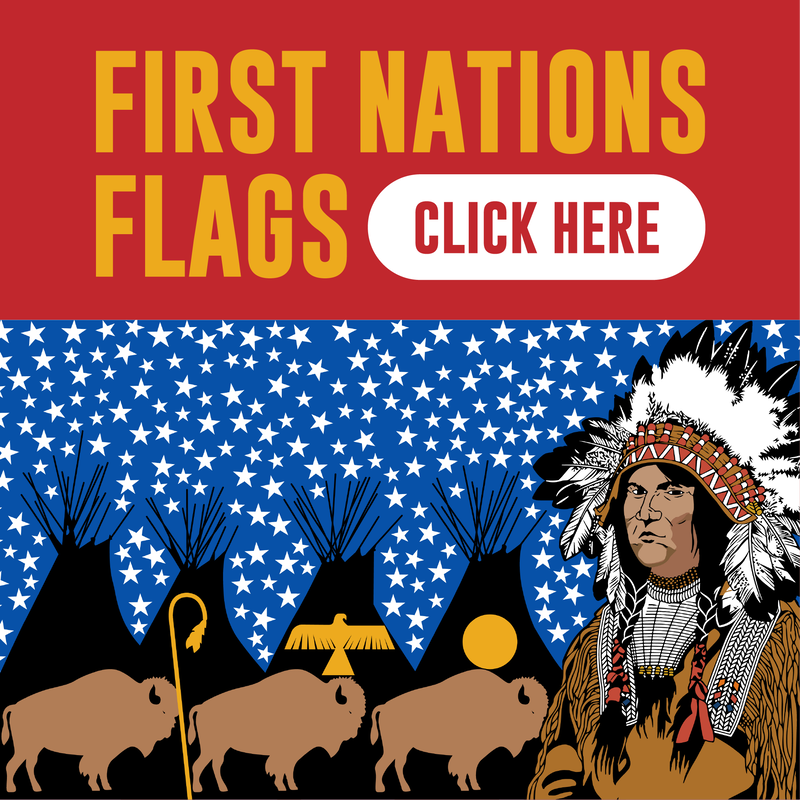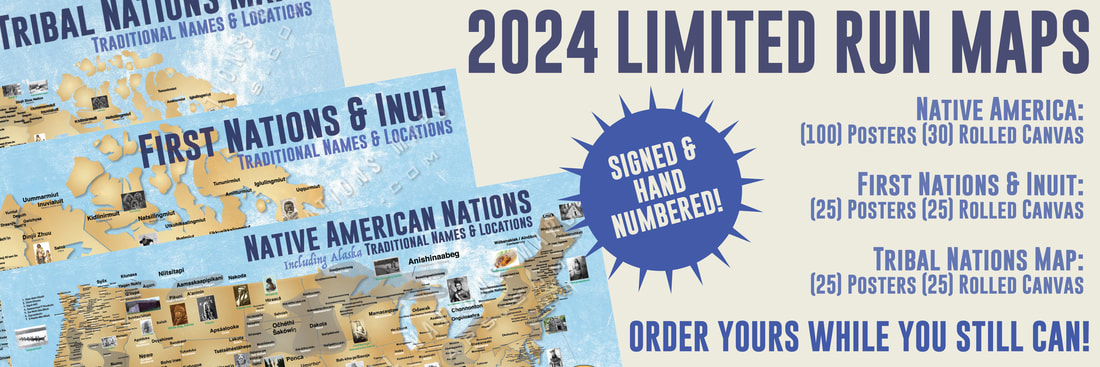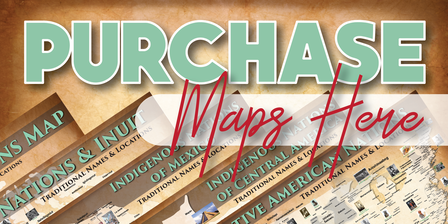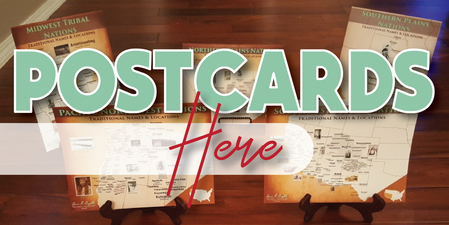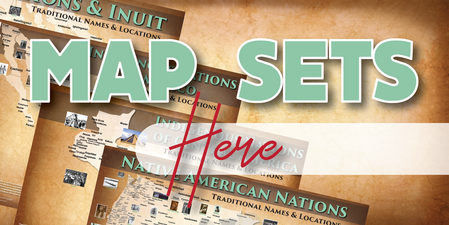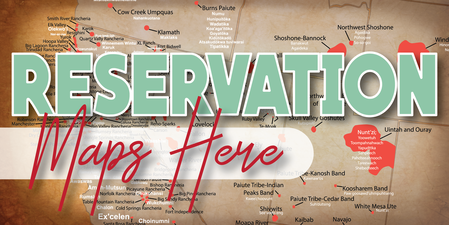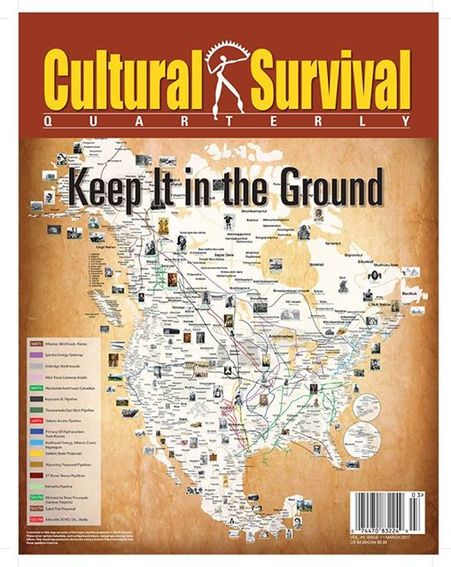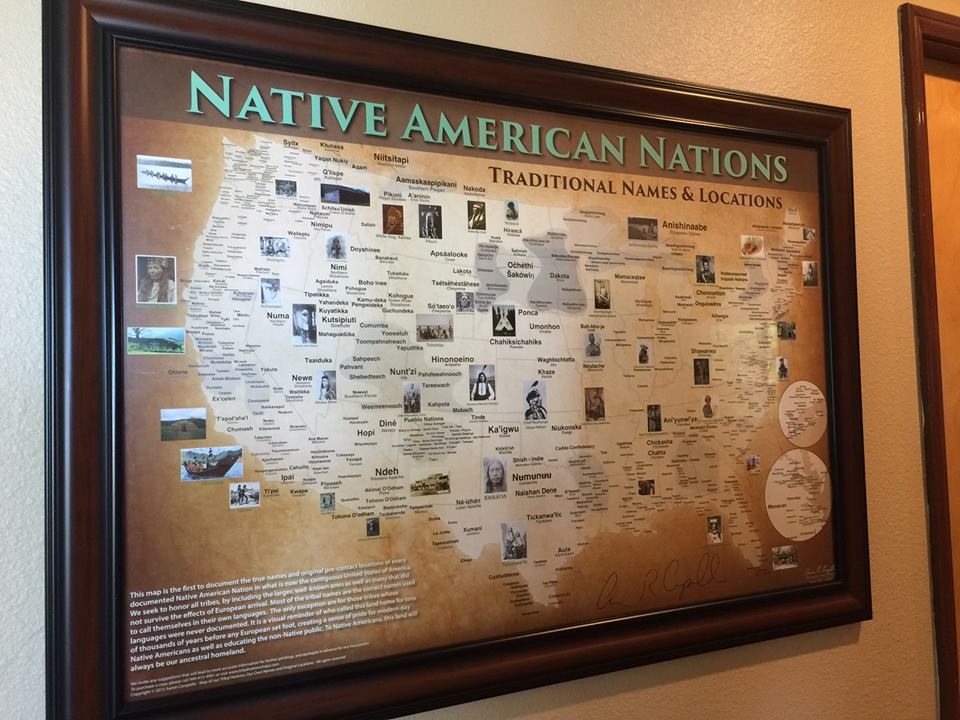Sequoyah - Notable Native Americans
Sequoyah is known for being one of the only individuals in human history to create a writing system for a language. He created the famous Cherokee syllabary, bringing literacy to a vast majority of his people in a very short time span in the 1820's. However, he is less well-known for his many other accomplishments. During his lifetime he was a hog farmer, trading post owner, silversmith, blacksmith, warrior, diplomat, among other things. He moved to Indian Territory in 1829, 9 years before the U.S. government forcibly removed the Cherokee Nation on the Trail of Tears to Oklahoma. Sequoyah spent his last years helping solidify the Early Cherokee Settlers (Western Cherokee) and the new coming arrivals (Eastern Cherokee), as well as trying to unify other various Cherokee groups who lived in surrounding areas. His last feat was to try to bring the Mexico Cherokees (who had fled there after the Texas Rangers attacked the Texas Cherokees and massacred 500 Cherokee people) back to Oklahoma, but died somewhere San Fernando de Rosas in Coahuila, Mexico .Sequoyah is arguably the most famous Cherokee of all, and was the ultimate patriot to his Cherokee people.
***Dedicated to our son Sequoyah Nighthawk, member of the Cherokee Nation
Matoaka (Pocahontas) - Notable Native Americans
Matoaka (Pocahontas) Matoaka (Pocahontas) was the daughter of Powhatan, the paramount chief of a network of tributary tribes in the Tsenacommacah, encompassing the Tidewater region of Virginia.
Pocahontas was captured and held for ransom by English colonists during the First Anglo-Powhatan War of 1613. Married at the time to Kocoum of the Patawomeck Nation, he was subsequently killed in the battles against the English.During her captivity, she was encouraged to convert to Christianity and was baptized under the name Rebecca. She married the tobacco planter John Rolfe in April 1614. In 1616 she sailed with her husband-at the encouragement of the Virginia Company to England, where she met English royalty. She was taken to promote the idea that Native Americans could be examples of Christian conversion.
Sometimes seen as a princess or peacemaker - and often inaccurately romanticized - her life was much more complicated than traditional narratives portray. She dies around the age of 21 in England shortly after boarding a boat to return home. She has many living descendants.
Quanah Parker - Notable Native Americans
Quanah Parker was a war leader of the Quahadi band of the Comanche Nation. He was the son of Cynthia Ann Parker - an Anglo-American who had been abducted as a nine-year-old child and assimilated into the Nokoni tribe -and Peta Nokona, a Comanche chief. During the 1870's Quanah became a skilled warrior, commanding warriors in multiple battles in which the Nʉmʉnʉʉ defeated the U.S. military and which also spanned into Mexico. In 1875 his band surrendered and settled on the Kiowa-Comanche-Apache Reservation in southwestern Indian Territory. Quanah Parker maintained a traditional Comanche worldview and life but also assimilated from a warrior life to a cattle rancher, helping ensure that the Comanches received fair payment for non-Comanche cattle grazing. He was one of the founders of the Native American Church. He spent most of his reservation life giving away his wealth to Comanche people in need. He is revered as one of the preeminent Chiefs of the Plains Indian Wars and an advocate for his People.
“White man goes into his churches to talk ABOUT Jesus, the Indian into his Tepee to talk TO Jesus.”
Sitting Bull - Notable Native Americans
Sitting Bull was a spiritual and war leader revered by his People. He led his band during a time of constant change and upheaval, refusing to engage in selling Tribal land or signing treaties. He is well known for his involvement in Red Cloud's War, the Battle of the Greasy Grass (Little Big Horn), and many other key and decisive battles during the 1860's and 70's. Sitting Bull later was involved in Buffalo Bill Cody's Wild West Show, traveling extensively and performing for large audiences. He was assassinated while being arrested for his acknowledgment of the Ghost Dance.
"I wish it to be remembered that I was the last man of my tribe to surrender my rifle." -
Sitting Bull
Isabel Meadows - Notable Native Americans
Isabel Meadows was an Ohlone ethnologist and the last fluent speaker of the Rumsen Ohlone language. She worked closely with the anthropologists from the Smithsonian Institution for more than five years in order to document her culture and language. Her work is considered fundamental in the study of Ohlone languages, especially Rumsen.
Laura Cornelius Kellogg - Notable Native Americans
Laura Cornelius Kellogg was a leader, author, orator, activist and visionary. She spent her life as a spokesperson and leading figure , arguing for tribal sovereignty, land claims and cultural renaissance. She was a founder of the Society of American Indians. She was a descendant of several Chiefs. Highly educated, she lived and traveled in several European countries and across the United States, fighting for local Tribes and diving into whatever cultures surrounding her. Her advocacy for Native peoples led her to be called the "Indian Joan of Arc." During her support of women's suffrage, she noted: ""It is a cause of astonishment to us that you white women are only now, in this twentieth century, claiming what has been the Indian woman's privilege as far back as history traces." SHe also wrote Our Democracy and the American Indian. Her advocacy and strong words led her to be hindered by accusations of misuse of funds or agitation. Her positions created divisions and often alienated government figures who found her approaches abrasive. Nevertheless, Kellogg was a powerhouse and relentless believer in speaking truth and defending Native peoples.
Lucy Thompson - Notable Native Americans
Lucy Thompson was a Native American author known for her book To the American Indian: Reminiscences of a Yurok Woman. Written in 1916, the book is intended to preserve her people's stories. She was a champion of her people, bringing to light the genocide of Native Californians, as well as over-fishing by non-Natives.
Chief Ouray - Notable Native Americans
Chief Ouray was acknowledged by the United States government as a chief of the Ute and he traveled to Washington, D.C. to negotiate for the welfare of the Utes. Ouray met with Presidents Lincoln, Grant, and Hayes and was called the man of peace because he sought to make treaties with settlers and the government, and was a constant force for peace. He tried to secure a treaty for the Uncompahgre Ute - who wanted to stay in Colorado - but was unsuccessful. His band was forced to a reservation in Utah in 1881. Chief Ouray had been a negotiator during the Treaty of Conejos (1863), wherein the Utes exchanged the loss of 50% of their land for the right to live in Western Colorado in perpetuity.
Zitkala-Ša - Notable Native Americans
Zitkala-Ša was a writer, editor, translator, musician, educator, and political activist. She wrote several works chronicling her struggles with cultural identity, and the pull between the majority culture in which she was educated, and the Dakota culture into which she was born and raised.She was co-founder of the National Council of American Indians in 1926, which was established to lobby for Native people's right to United States citizenship and other civil rights they had long been denied.
Lyda Conley - Notable Native Americans
Lyda Conley was the first Native American woman to argue a case before the U.S. Supreme Court . She was also the first woman admitted to the Kansas Bar Association.
Her case appears to be the first in which "a plaintiff argued that the burying grounds of Native Americans were entitled to federal protection." At the heart of the case was her Tribe's The Huron Indian Cemetery, which was under threat of purchase for development. She spent her entire life defending the cemetery, and is buried there.
Mountain Wolf Woman - Notable Native Americans
Mountain Wolf Woman (Xéhachiwinga)
Her autobiography was one of the earliest firsthand accounts of the experience of a Native American woman. Mountain Wolf Woman, Sister of Crashing Thunder, details seventy-five years of Native American life and the role of women in native cultures, and was seen as an important contrast to her brother Sam Blowsnake's book from thirty-five years earlier.
Sophia Alice Callahan - Notable Native Americans
Sophia Alice Callahan was a novelist and teacher. Her novel, Wynema, A Child of the Forest (1891) is thought to be the first novel written by a Native American woman. Her novel was also the first to written and published in Indian Territory (Oklahoma). Her book was called a "reform novel," identifying many wrongs suffered by Native Americans in United States society.
A Brutal Reckoning: Andrew Jackson, the Creek Indians, and the Epic War for the American South
The story of the pivotal struggle between the Creek Indians and an insatiable, young United States for control over the Deep South—from the acclaimed historian and prize-winning author of The Earth is Weeping
The Creek War is one of the most tragic episodes in American history, leading to the greatest loss of Native American life on what is now U.S. soil. What began as a vicious internal conflict among the Creek Indians metastasized like a cancer. The ensuing Creek War of 1813-1814 shattered Native American control of the Deep South and led to the infamous Trail of Tears, in which the government forcibly removed the southeastern Indians from their homeland. The war also gave Andrew Jackson his first combat leadership role, and his newfound popularity after defeating the Creeks would set him on the path to the White House.
In A Brutal Reckoning, Peter Cozzens vividly captures the young Jackson, describing a brilliant but harsh military commander with unbridled ambition, a taste for cruelty, and a fraught sense of honor and duty. Jackson would not have won the war without the help of Native American allies, yet he denied their role and even insisted on their displacement, together with all the Indians of the American South in the Trail of Tears.
A conflict involving not only white Americans and Native Americans, but also the British and the Spanish, the Creek War opened the Deep South to the Cotton Kingdom, setting the stage for the American Civil War yet to come. No other single Indian conflict had such significant impact on the fate of America—and A Brutal Reckoning is the definitive book on this forgotten chapter in our history.
Hardcover. 2023. Cozzens, Peter.
Native America Including Alaska - 24"x36"
- Native America Map w/ State Borders, Native & Common Names - This map comes with the modern-day state borders, traditional Tribal names (autonyms) and the commonly-known Tribal names.
- Native America Map w/ State Borders, Native Names ONLY - This map comes with the modern-day state borders, and the traditional Tribal names only (autonyms).
- Native America Map NO STATE BORDERS, Native & Common Names - This map comes with no state borders, traditional Tribal names (autonyms) and the commonly known Tribal names.
- Native America Map NO STATE BORDERS, Native Names ONLY- This map comes with no state borders, and the traditional Tribal names only (autonyms).
|
|
|
|
7-25-2022 - Just published : The best in-depth article about our Tribal mapping mission. Feel free to share!
https://medium.com/@wrytebb/lives-reclaimed-through-maps-4473fa2dc182 1-3-2021 - Interview on NPR's All Things Considered How Children's Books Grapple With The Native American Experience : NPR |

